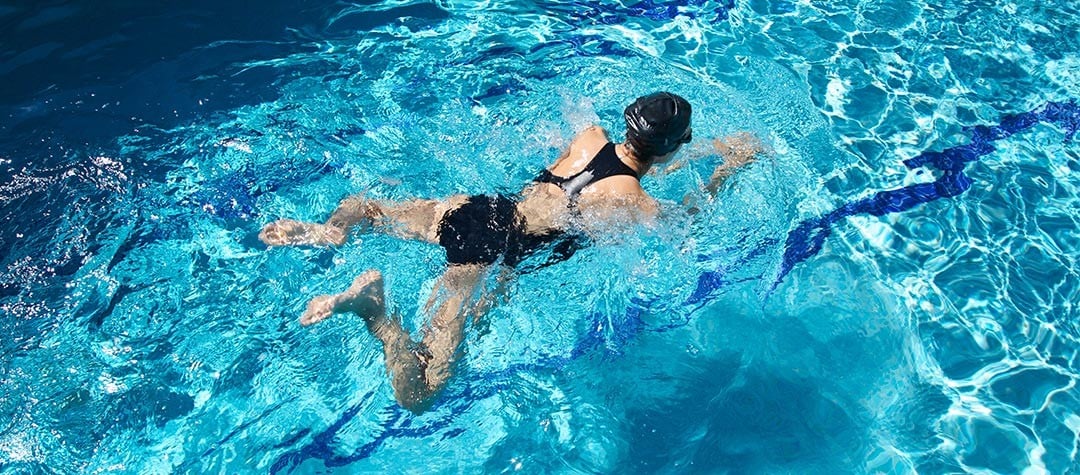Breaststroke is the most commonly used stroke, yet it is badly executed by many swimmers. Find out how to master the breaststroke.
Breaststroke is arguably the most technical of all the strokes, similar to the others, the objective is to be as efficient as possible. It is however the slowest as it is the least streamlined of the four swim strokes and involves a strong kick and perfect timing.
Breaststroke is the slowest as it is the least streamlined of the four swim strokes and involves a strong kick and perfect timing.
Here are some tips to help you master your breaststroke technique by focusing on key part of the body involved in the stroke:
Head
- The hands and elbows are tucked in to your sides and are squeezed together.
- At this point you will raise your head, just enough to breathe in.
- Your chin should be resting on or just below the surface of the water.
- As you glide you should exhale, which will also relax you on extension.
- Your eyes should look downwards, do not strain your neck by lifting too high.
- Similar to front crawl, lifting the head will put pressure on the neck and spine.
- The more you lift your head, the more your legs will drop and make you inefficient.
Body position
- Unlike front crawl where you can rotate to put less body mass through the water, with breaststroke you have a flat body position and the aim is to put it through the smallest surface area as possible.
- The stroke is all about timing and it’s necessary to have strong core muscles to keep you stable in the water.
Breathing
- Again it is about timing, it is important to breathe in as you are through the pulling phase of the stroke, which will lift you upwards in order to take a breathe through the mouth and exhale under the water through the glide.
- Breathing should be relaxed and not forced, the same when exhaling.
Arms
- Keep your arms on the pull as narrow as possible in order to break as little surface area as possible.
- You pull back in a small scoop like motion with elbows tucked into your side.
- Doing a big wide pulling circle will slow you down creating more drag.
- On extension stay as relaxed as possible and allow yourself to glide and pull back just before slowing down.
- The more you practice, the better you will become on the timing of this.
Legs and feet
- The legs and feet unlike any of the other strokes are the main source of power, more than the arms.
- The feet are turned outwards and are kicked in a frog like motion.
- Ankles and feet need to be as relaxed as possible.
- Bring your feet back towards your back side.
- Drive the feet back and outwards into extension.
- When the knees and legs are straight, push the feet back together, which will allow you to glide forwards in a streamlined position.
Practicing
A good place to start when learning breaststroke is doing drills on your back to understand the motion and how you propel yourself forward. It is a basic drill, however will teach you the shape and timing of the action.
Turns
- When approaching the wall, aim to time it so you are on the glide phase of the stroke as you touch the wall.
- You must touch the wall with both hands in a race otherwise you will face disqualification, so it’s a good idea to always practice this to get into a good habit.
- Once you have touched the wall, place feet up against the wall sideways, your head comes out of the water for the turn.
- Your face will then go back into the water, push off in a streamlined position and pull back, kick and extend into the stroke.
Here is an example of a basic breaststroke drill (on your back):
- Facing the wall, push off with arms above your head, hands together and extend into a streamlined position, on your back.
- Turn hands, palms facing outwards and carryout out a sweeping circular motion, pushing the water backwards and outwards initially with straight arms and then bending at the elbow to bring your hands back together at your chest. You do not need to pull your arms wide.
- Move your hands back to the starting position together and extend backwards behind the head initiated by the kicking action turning feet outwards and bend from the knees. Kick outwards in a sweeping like fashion into straight legs together.
- Repeat arm sweep again and follow the same process. Timing is the key.














